With Coal Power Down to 1975 Levels, Reducing Carbon Emissions Gets Trickier
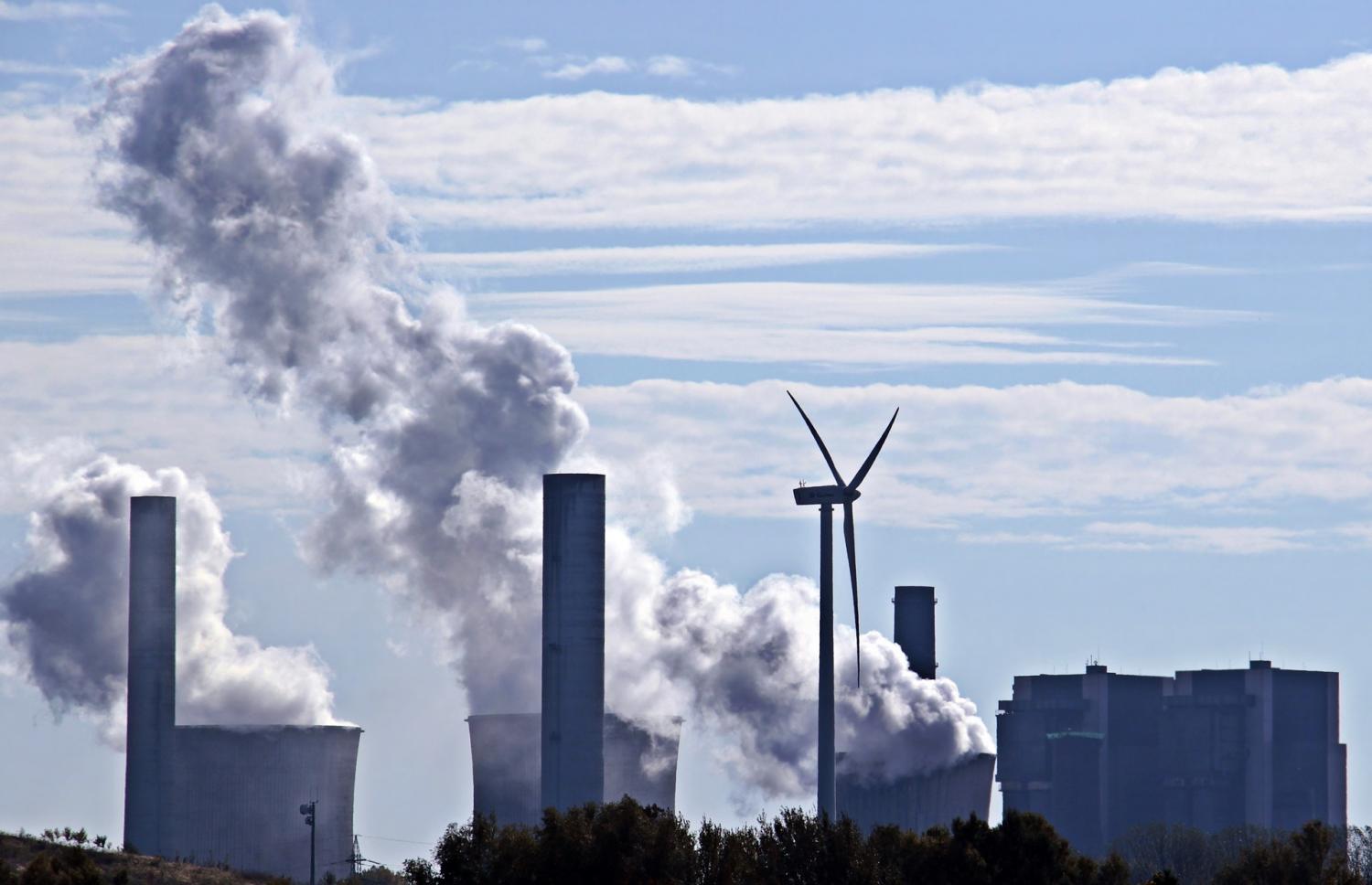

Electricity generation in the U.S. has shifted dramatically over the years, as coal power continues its rapid decline. That shift supports the view that a combination of public policy and bottom-line benefits can have a significant, lasting impact on carbon emissions without impinging on economic growth. Unfortunately, coal power represents the low hanging fruit of carbon management. Businesses seeking to lead on climate action would do well to focus attention on transportation and other sectors where carbon emissions remain stubbornly high.
All the good news about carbon emissions in the U.S.
A new carbon emissions report by the independent research firm Rhodium Group illustrates how public policy and private sector motivation have combined to drive coal out of the power generation sector.
The new report is a preliminary analysis of carbon emissions in the U.S. for 2019. For all sectors combined, Rhodium anticipates a 2.1 percent year-over-year drop in emissions compared to 2018.
That’s the good news. However, if all sectors of the economy performed as well as the power sector, the drop would be more on the order of 10 percent.
Rhodium reports that the carbon emissions from power sector decreased by 10 percent in 2019, primarily due to the collapse of coal.
Although carbon emissions from natural gas power plants rose, coal-fired power generation sank 18 percent compared to 2018. That brought coal power down to a level not seen since 1975, and it was more than enough to offset the increase in natural gas emissions.
Last year’s steep falloff in power sector emissions was also impressive over the short term. Rhodium reports that the drop of nearly 10 percent in 2019 was the “the biggest year-on-year drop in decades,” and it was well below the previous year-over-year drop of only 1.2 percent in 2018.
All the bad news about carbon emissions
So much for the good news. According to Rhodium, the bad news is that overall carbon emissions in the U.S. were slightly higher across — yes, higher — than they were in 2016. There was a sharp uptick from 2017 to 2018, and the drop of 2.1 percent in 2019 was not quite enough to offset that upward movement.
Rhodium explains:
“Emissions from buildings, industry and other parts of the economy rose, though less than in 2018. All told, net U.S. GHG emissions ended 2019 slightly higher than at the end of 2016.”
If that sounds ominous, it is. According to Rhodium, at this rate the U.S. is far from meeting the weak climate action goals of the 2009 Copenhagen Accord, let alone the more ambitious goals of the 2015 Paris Agreement.
So, where is the culprit?
In 2019, transportation and industrial emissions edged up slightly, while buildings increased significantly, by 2.2 percent.
It appears that the biggest damage was done within the remaining sectors, including oil and gas operations as well as agriculture and land use. Emissions in those sectors rose by 4.4 percent.
Businesses can still lead on climate action
The Rhodium report may sound discouraging, but in effect it is a call to action.
Climate policy has stalled out in the White House, but given the advent of low cost energy storage and the burst of new activity in the nation’s vast offshore wind sector, businesses seeking renewable energy will not have to look far in the years to come.
Businesses looking to lead on climate action can also adopt new alternatives in other sectors as new technology comes into the market.
In transportation, auto makers are gearing up to push millions of electric cars onto the roads. Renewable hydrogen is also providing new opportunities to electrify vans, trucks and other heavy duty vehicles. A similar trend is taking place in maritime shipping, and alternative fuels for aircraft are also emerging.
In buildings, a handful of local jurisdictions have already banned new natural gas hookups. Business can get a jump on the building electrification trend by retrofitting their existing property, too. As more buildings eliminate natural gas in favor of electric appliances, economies of scale will help improve bottom line incentives for making the switch.
Carbon emissions from industry still present a challenge, but manufacturers seeking to clean up their supply chains can look forward to more options for “green” steel and low-carbon aluminum, among other raw materials. The advent of green chemistry also promises to reduce the carbon footprint of manufactured products.
The common denominator in all of these actions is a shift away from natural gas, petroleum fuels, and petrochemicals, and that will help turn carbon emissions around in other sectors. When businesses sort their supply chains with an eye on carbon emissions, they will have a direct impact on emissions related to oil and gas at the source.
The alternatives are at hand, and businesses can do more to push the carbon emissions envelope regardless of White House policy.
Image credit: Pixabay
Climate Crisis Tests Limits of Employee Activism on the Environment
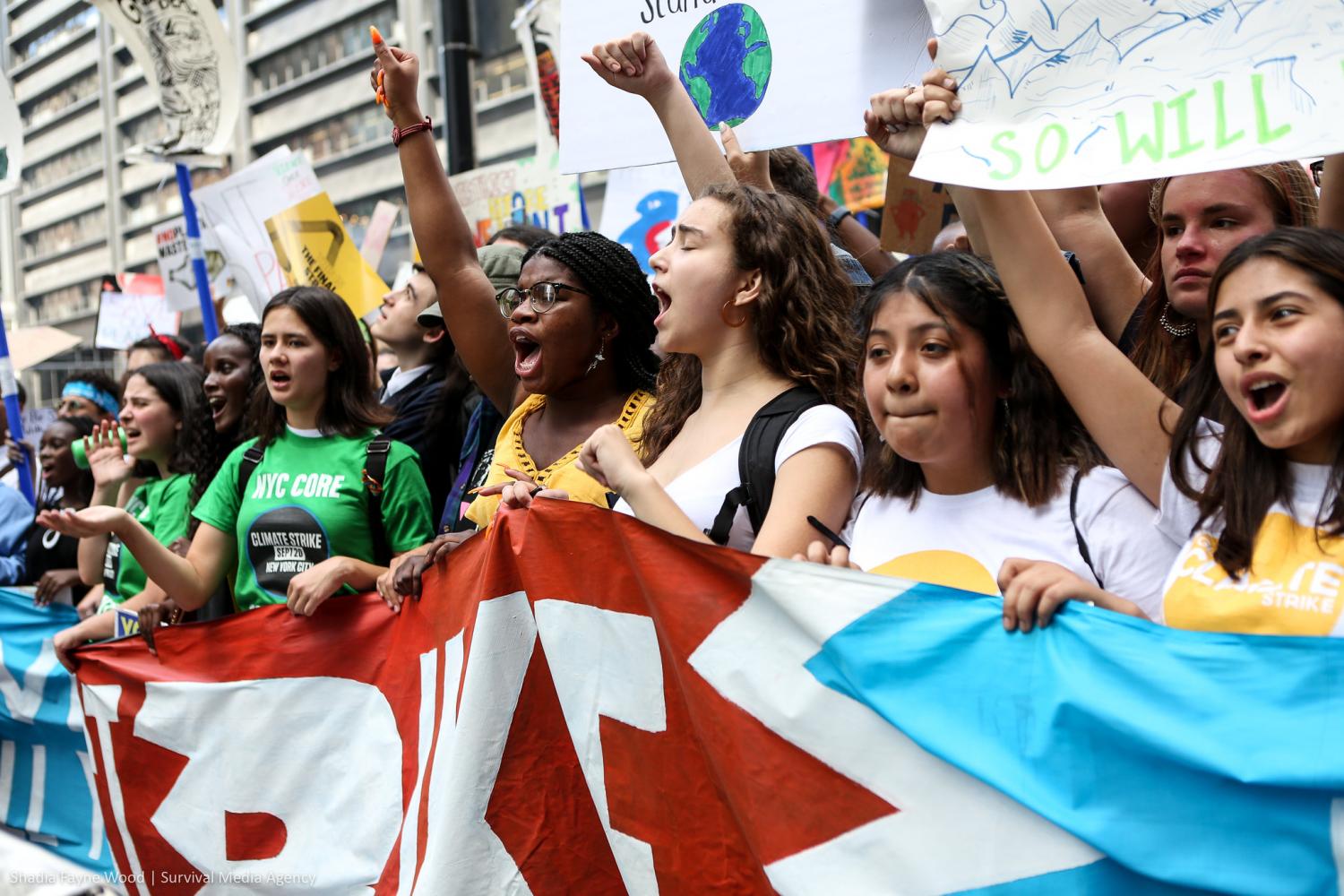

As the climate crisis grows, tech workers have been pressing their employers to take more aggressive action on the environment and climate change. Now, some leading companies are pushing back. In one recent development, Amazon received some unwelcome media attention last week when word surfaced that it has explicitly threatened at least two outspoken employees with termination.
So, how should companies respond to employee concerns on the environment?
When clean power is not enough to save the planet
Amazon and other tech companies have earned high marks for investing in renewable energy, and rightfully so.
As early — and aggressive — clean power adopters, these large, global businesses have pushed the market for wind and solar power, promoting economies of scale and supply chain efficiencies that help push costs down for everyone.
However, as the Amazon case illustrates, tech companies cannot rely on their clean power investments to shield them from criticism over their environmental policies.
In particular, Amazon and other tech companies have come under fire for offering services that help fossil fuel companies increase production.
Last February, the media organization Think Progress published a report on the issue under the somewhat incendiary headline, “Amazon, Google, and Microsoft are quietly helping Big Oil destroy the climate.”
As described by Think Progress, Amazon Web Services is the largest provider of cloud computing in the world, and it has created an entire oil and gas division to provide those services to the fossil fuel industry.
Amazon “already does work with GE’s oil business and oil giants like Royal Dutch Shell and BP," Think Progress reported, and it appears that the company is determined to bring others on board.
“With Amazon Web Services (AWS), Oil and Gas companies can accelerate digital transformation, unleash innovation to optimize production and profitability, and improve cost and operational efficiencies necessary to compete under the pressures of today’s global energy market,” Amazon states on its website.
Amazon further emphasizes its ability to ramp up production despite negative forces at work in today’s market:
“…Explorers can extract deep insights faster to improve field planning, geoscientists can run more demanding HPC workflows and identify potential reservoirs faster and cheaper, and refineries can optimize production with predictive maintenance and predictive inventory planning.”
Calling “green” tech companies to account
Considering Amazon’s courtship of oil and gas stakeholders, it’s little wonder that climate activists within the company’s own workforce have taken notice.
Workers have organized themselves under the title, Amazon Employees for Climate Justice. Describing themselves as “a group of Amazon employees who believe it’s our responsibility to ensure our business models don’t contribute to the climate crisis,” they have been posting personal stories about climate impacts on outlets such as Medium.com and on social media.
Last spring, they upped the ante by sending an “unprecedented” letter about their concerns over climate policy to Amazon CEO Jeff Bezos.
Things came to a head last September during the global Climate Strike, in which Amazon workers publicly participated.
As media attention over the Climate Strike heated up, two workers provided The Washington Post with a joint statement about their concerns.
Last week the Post followed up with a report that Amazon has issued explicit, written termination warnings to two workers, apparently over that statement.
What about free speech?
Amazon is already in hot water with corporate responsibility watchers over workers’ rights related to pay and benefits among other issues, and this new controversy only adds fuel to the fire.
Leading companies generally tread carefully around issues involving freedom of speech, because the risk of bad publicity is simply not worth the gain.
Although businesses are not subject to the free speech guarantee of the First Amendment of the U.S. Constitution, the public often sees no distinction.
If fallout from last week’s Washington Post article continues to build, it will be interesting to see how Amazon reacts.
Though the damage has already been done, there is still plenty of room for damage control.
Perhaps the company could lift some pointers from companies that supported the 2019 Climate Strike and took steps to encourage their employees to participate.
Some closed for the day, enabling employees to participate in person. Hundreds of others supported the Climate Strike with online messages and other activities, or through their membership in organizations like the American Sustainable Business Council.
Those actions are more than symbolic. Companies that encouraged their employees to participate in the Climate Strike have, in effect, publicly joined their name with voters and environmental organizations advocating for more aggressive federal environmental policies.
In the end, though, Amazon and other tech companies will only tamp down the criticism when they change their business models.
As 2020 unfolds with much of Australia on fire and other climate-related crises building around the world, a stern letter from the boss will probably not stem the rising tide of employee activism.
Image credit: 350.org/Flickr
3 Renewable Energy Developments That Will Define 2020

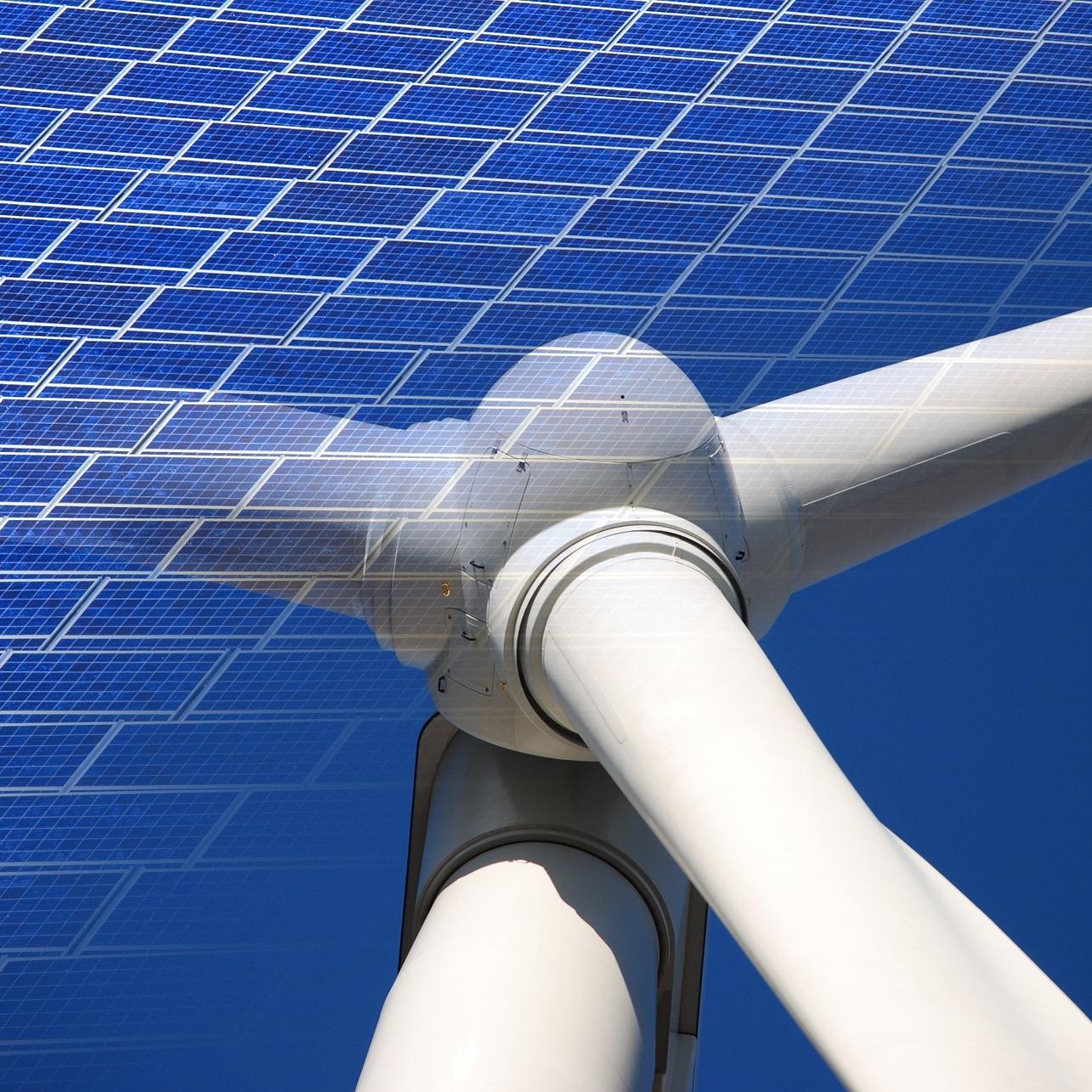
Building on last week’s discussion of clean technology trends that will surely unfold during the coming year, we’re continuing the discussion on what we think TriplePundit readers should watch out for as governments and the private sector scramble to decarbonize the economy. Read on for the top trends in renewable energy.
Wind and solar, perfect together
One strategy for overcoming the site selection bottleneck challenge as renewables scale up is to make the most of one site: for example, by combining both wind turbines and solar panels within a hybrid renewable energy system.
The basic idea is to manage peaks and valleys in the output of wind turbines and solar panels to provide for greater overall reliability. That’s a much more complicated engineering feat than it may sound, but at least one hybrid wind-solar plant is already in the works in Minnesota.
With the addition of energy storage, wind-solar hybrid plants have the potential to replace gas power plants. Look for more activity in this area as states and local jurisdictions — and business stakeholders — ramp up the demand for 24/7 renewable energy.
The U.S. offshore wind industry: It floats!
After years of kicking around in the doldrums, the U.S. offshore wind sector saw a veritable tsunami of new projects come into the pipeline for several key Atlantic coast states last year, including New York and New Jersey.
From here on out, it’s almost a matter of routine. Globally, offshore wind is a mature industry well suited to the relatively shallow waters that characterize much of the Atlantic coast.
The problem now is to introduce offshore wind into deeper and more challenging areas, including parts of the Atlantic coast as well as along the Pacific shores. The answer is floating offshore wind farms.
California and Maine are in a race to see who can get there first. So far, it looks like the Granite State is inching ahead with an anchor buyer already lined up for a project based on research and development driven by the University of Maine, but look for activity in California as well.
Wind-friendly Texas is another state to watch. Earlier this fall, the University of Texas won a $3 million grant from the Department of Energy to develop a low-cost “vertical axis” system for floating wind turbines, most likely with an eye on providing renewable energy for offshore industries.
Making new space for solar arrays
In terms of accelerating the renewable energy revolution, local opposition to new wind farms and solar arrays is a key obstacle. Two approaches could help open up that bottleneck by expanding the range of potential sites for solar panels.
One is floating solar panels, a trend that has emerged globally. Here in the U.S., the focus is on using human-built ponds and reservoirs rather than interfering with natural water bodies.
For farmers, the side benefit is that the panels reduce evaporation, making more water available for agricultural use. Several wineries in California have already latched on to the idea, and look for it to catch on elsewhere.
The other approach is the burgeoning field of agrivoltaics, in which solar panels are raised high off the ground in areas primarily devoted to the production of food.
The added height provides room for grazing livestock and establishing pollinator fields. Growing crops under the panels is another option, though it looks like a few more years of research and development are needed in that area.
As with floating solar panels, another side benefit of agrivoltaics involves water resources, because the raised panels help reduce evaporation from the soil below.
Image credit: Pixabay
So CES Missed the Mark on Women in Tech: Now What?
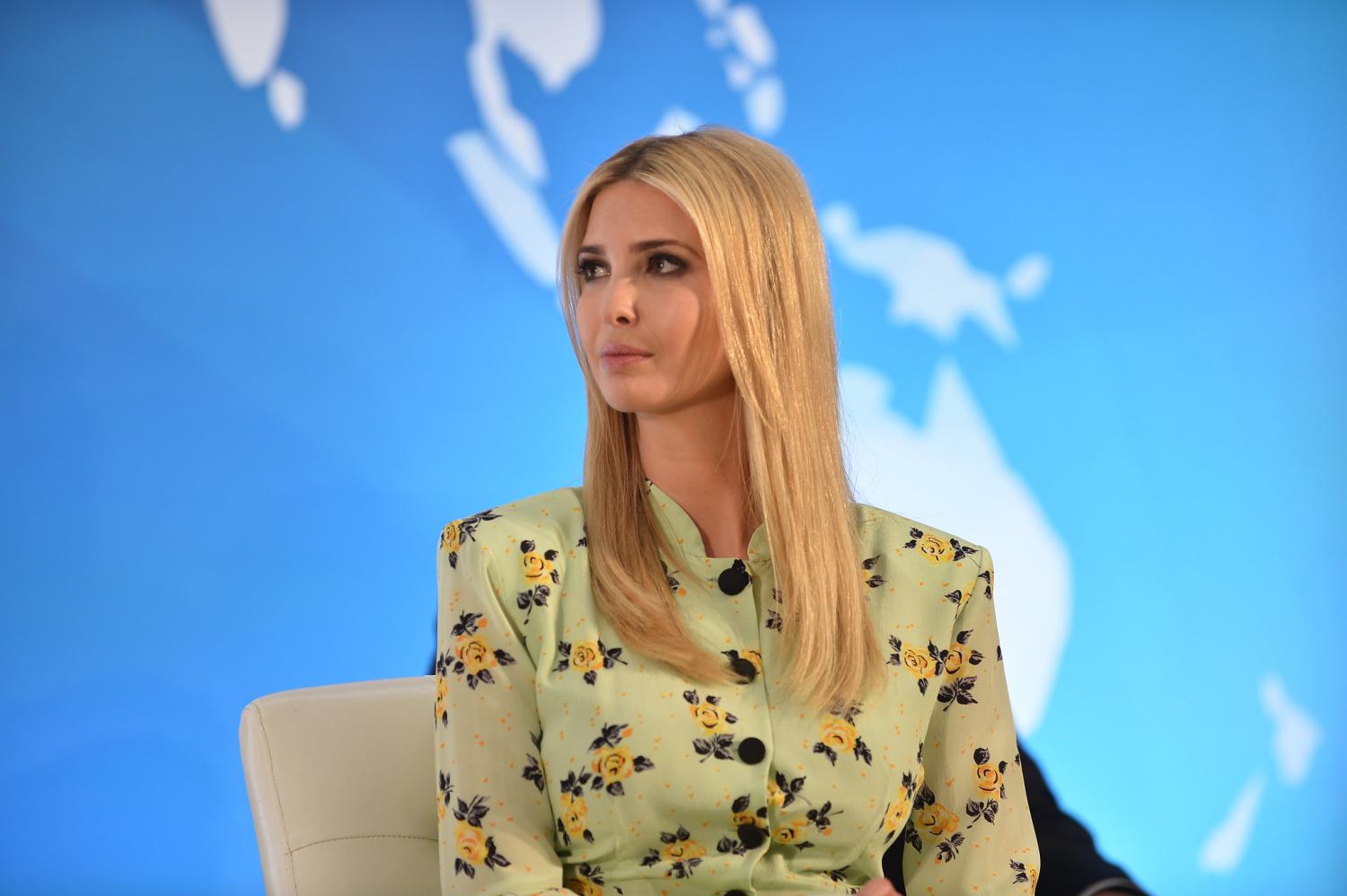
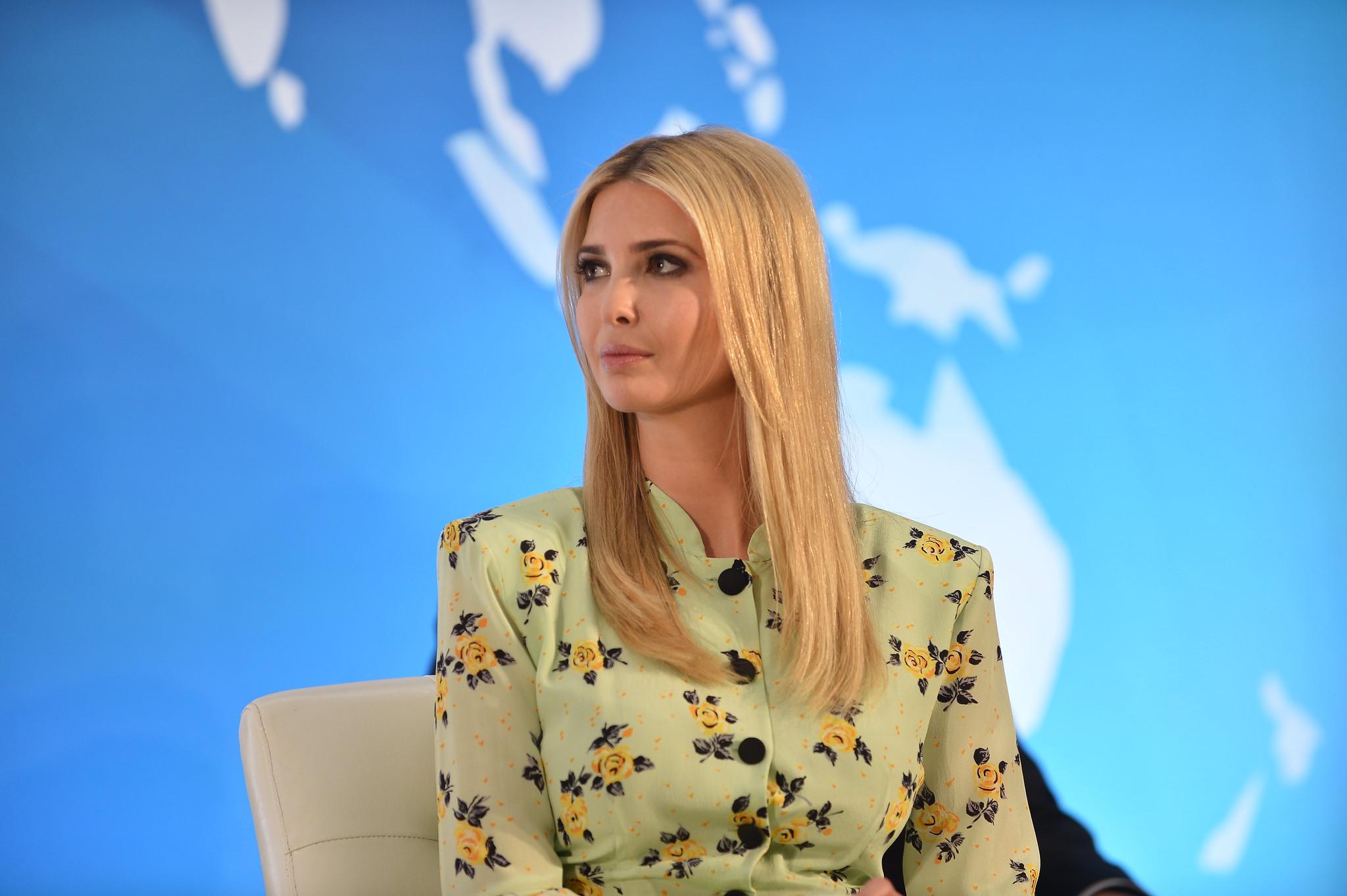
The Consumer Electronics Show (CES) in Las Vegas stepped into a hornet’s nest as 2019 drew to a close, when the organizers announced that White House advisor Ivanka Trump would be one of the keynote speakers. In normal times, a high-level speaker like that would have been a plum catch. However, as the event unspools this week, CES is in the awkward position of providing a high-profile platform to the daughter of a president in the midst of impeachment hearings, who critics point out has been credibly accused of serial sexual assault, among other many other issues that have an impact on women and families.
Nevertheless, the situation has turned into a teachable moment for businesses seeking to recruit women without falling into the tokenism trap.
Why Ivanka as CES keynoter?
Ivanka Trump comes to the CES stage with her own baggage as well as the myriad of issues encircling the presidency and business practices of her father.
The list includes an apparent attempt to capitalize on her father’s election by promoting her eponymous lifestyle brand. That effort ultimately failed, though Ivanka Trump continues to leverage her position to obtain additional trademarks overseas.
Accusations of labor abuses in Chinese factories associated with the Ivanka brand also trailed Ms. Trump after her father was elected. That sets up a tragically ironic contrast with the reported subject of her keynote address: the impact of technology on the future workforce.
Ivanka Trump has also been barred from serving on charities in New York state, as one consequence of a $2 million legal settlement agreed to by President Trump over misuse of funds by the family charity, the Trump Foundation.
In addition, her position as a White House advisor on “the education and economic empowerment of women and their families” rings hollow, considering policies of the Trump administration that undercut her women-and-families mission.
In short, her position at the White House reads as window dressing.
No, really, why Ivanka?
Given this context, reporters are now questioning if the CES keynote assignment came after organizers intentionally reached out to Ivanka Trump, or if they slotted her in to fulfill a request from the White House.
That’s a good question, considering that the speakership also puts a high-level CES representative on the spot.
Part of the speaking package includes an interview with Gary Shapiro, who is president and CEO of the Consumer Technology Association, which owns and produces CES.
Questioned by reporters over the weekend, Shapiro declined to say whether the invitation came from CES or was requested by the White House.
He did say that the presence of Ivanka Trump on the keynote list is appropriate because “there is a lot of focus on jobs of the future, and certainly the keynote that I'll be doing with Ivanka Trump will be focusing on ... how industry is working with government on this very important issue,” he said in remarks reported by BBC News and other media outlets.
How trade organizations can help push gender diversity forward
Among the many CES observers to weigh in on the topic is Carolina Milanesi, founder of the gender and diversity consulting firm Heart of Tech.
In an opinion piece published in Forbes on Dec. 21, Milanesi nailed tokenism as the main issue:
“The reason for my upset is rooted in the fact that there are many more women who are in tech and are entrepreneurs who could run circles around [Ivanka] Trump on how technology will impact the future of work.”
While making it clear that change will not “balloon” up overnight, Milanesi outlined steps that organizations like CTA can take to help accelerate diversity.
“The number of women in high roles in tech companies will not balloon up overnight … This does not give us permission to do nothing, though, and patiently wait,” she writes.
In essence, Milanesi argues that events like CES have a duty and an opportunity to help push the envelope. The opportunities are far-ranging, from enforcing non-sexist dress codes at exhibitor booths to setting diversity targets.
She also advises that participants can help by refusing to join non-diverse panels and speaker lineups, a trend that is beginning to gather force. Women can also refuse to facilitate tokenism by declining to moderate non-diverse panels.
Stretching the definition of “qualified”
In a Jan. 5, 2018, letter to gender activist Gina Glanz, Shapiro indicated that CTA has gotten the message about the role of event organizers in promoting gender diversity and avoiding tokenism.
Or, did they? By way of defending their exclusion of women in keynote roles at the 2018 event, CES posted a message on its blog that described the qualifications for keynote speakers (cited by CBS News among others).
The post explained that keynote speakers at CES must be the president or CEO-level head of a “large entity who has name recognition in the industry.”
The blog post went on to lament (emphasis added): “As upsetting as it is, there is a limited pool when it comes to women in these positions. We feel your pain. It bothers us, too. The tech industry and every industry must do better.”
In that light, the Ivanka Trump keynote reads as tokenism at its worst. The goal posts have shifted between 2018 and 2020. A talented and hardworking woman in the tech field, regardless of her track record, will be skipped over in favor of another woman from another field who can top her with family connections and access to power.
For CTA and CES, throwing a keynote assignment to a uniquely privileged and controversial woman with no hands-on record in the technology field was a risk that someone felt was worth taking.
The question is, who?
Image credit: U.S. Department of State/Flickr
JetBlue Pledges To Offset All Carbon Emissions for U.S. Flights
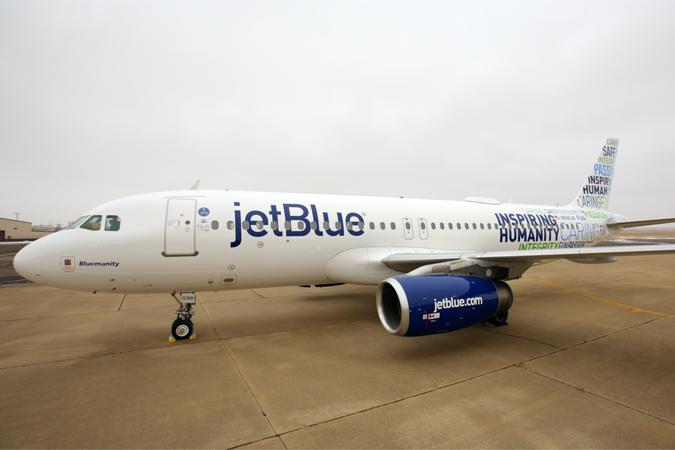
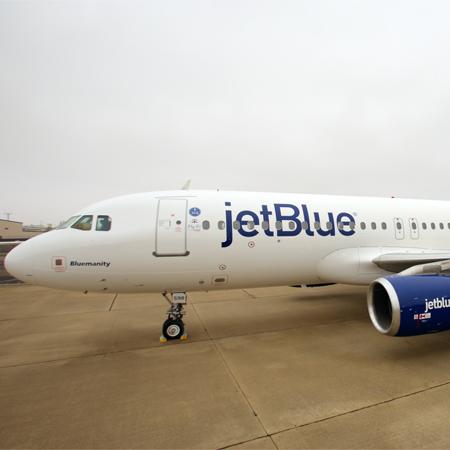
JetBlue rang in the new year by pledging to offset carbon dioxide (CO2) emissions from jet fuel for all of its domestic flights beginning in July, the first such announcement from a major U.S. airline. The company also said it will start using sustainable aviation fuel in mid-2020 on its flights from San Francisco.
JetBlue produces about 8 million metric tons of carbon dioxide emissions each year. In a statement, the company said yesterday’s announcements underscore its "long-term strategy to ensure a more sustainable business for crew members, customers, shareholders and communities served by JetBlue.”
The efforts also build on the airline’s existing programs like investments in fuel-saving technologies and aircraft, as well as advocating for a more fuel-efficient air traffic control system that would reduce emissions from flying.
Airlines react to “flight shaming” movement
Yesterday’s announcement comes as the aviation sector works to stay true to its commitment to cap emissions at 2020 levels so that any growth after this year is achieved in a “carbon neutral” way. It won’t be an easy feat given that the International Air Transport Association predicts air travel will grow to 7.2 billion passengers by 2035—a near doubling of current levels.
Alarm is also spreading among activists, represented most visibly by Greta Thunberg, who herself has not flown since 2015. The anti-air travel movement has even given rise to a new term: “flight shaming,” the concept of shunning air travel or encouraging others to avoid it, in favor of less environmentally impactful travel methods, such as trains or boats. In addition, some politicians in Europe have even suggested that some long-haul international routes and domestic flights be banned due to their large carbon footprints.
Increasingly, airlines are recognizing that business as usual is not sustainable.
“Air travel connects people and cultures, and supports a global economy, yet we must act to limit this critical industry’s contributions to climate change,” Robin Hayes, CEO of JetBlue, said in a statement. “By offsetting all of our domestic flying, we’re preparing our business for the lower-carbon economy that aviation—and all sectors—must plan for.”
Removing 1.5 million cars from the road
JetBlue first began offsetting carbon dioxide emissions with programs to balance customer flying during specific times of year, but yesterday’s announcement expands those efforts.
JetBlue will continue to partner with Carbonfund.org—a U.S.-based nonprofit carbon reduction and climate solutions organization—as well as with two new carbon offsetting partners, EcoAct and South Pole. These partners will help the airline offset an additional 15 billion to 17 billion pounds (up to 8 million metric tons) of emissions per year, the annual equivalent of removing more than 1.5 million passenger vehicles from the road, according to the announcement.
The airline will earn carbon credits by investing in projects that protect forests from destruction; develop solar and wind farms instead of coal, diesel or furnace oil to generate power; and capture landfill production of methane, which can be converted into a renewable energy source.
“JetBlue's announcement is both an ambitious and necessary course of action needed to address the climate change impacts of aviation,” Michael Malara, who leads the North American office for South Pole, told TriplePundit. “While we have a long way to go as a global community, this commitment sets a high bar for other airlines and a strong signal to the carbon markets, which should catalyze further investment into emission reduction projects around the world. “
Offsetting is not enough, some say
While corporate efforts have been welcomed, some environmental advocates criticize moves to offset emissions, saying reducing emissions is more effective and, ultimately, critical to reaching global climate goals. JetBlue’s Hayes does not disagree.
“Carbon offsetting is a bridge to, not a silver bullet for, a lower carbon future,” Hayes said. “Reducing and mitigating our greenhouse gas emissions is a fundamental aspect of our business plan.”
To that end, JetBlue has agreed to purchase sustainable aviation fuel from Neste, the world’s largest producer of renewable diesel fuel, starting this year. According to the company, the fuel will be produced entirely from waste and residual raw materials and, over its lifecycle, will have up to an 80 percent smaller carbon footprint compared to fossil jet fuel.
JetBlue says it will also continue to invest in its new fuel efficient fleet that produces fewer carbon emissions than its older fleet through smarter design and the use of lightweight composite materials.
Beyond JetBlue: Other airlines are also taking action
Last November, EasyJet Plc, Europe’s second largest discount carrier, was the first airline to announce it would offset carbon emissions from its flights. Germany’s Lufthansa has signed an agreement with a Hamburg-based refinery for the production and acceptance of synthetic kerosene from regionally generated wind energy to use as an alternative biofuel. And Finnair and SAS have joined together, along with nine other partners, to develop all-electric, carbon-neutral designs that can replace aircraft for short distances.
In Asia last year, Japan’s ANA Group was the first global airline to issue Green Bonds, which will raise funds for green projects both in Japan and overseas. ANA is also introducing biofuel on its flights by supporting Euglena Co Ltd, a biofuel maker working to commercialize jet fuel made from green algae output.
Last July in the U.S., Delta flew a completely carbon-neutral flight and plans to introduce 20 carbon-neutral aircrafts to its fleet moving forward.
“Reducing and offsetting carbon emissions for airlines should increasingly become a cost of doing business,” said Malara of South Pole. “With its recent announcement, Jet Blue is going above and beyond hopefully inspiring other airlines to do the same.”
Images courtesy of JetBlue
Are EVs Sparking a Manufacturing Job Loss?


The movement to electrify vehicles may improve local air quality and decrease greenhouse gas emissions, but does it help workers? As the New York Times recently reported, there is another story unfolding within this shift across the automotive sector. Around the world, the rise of electric vehicles (EVs) is spelling trouble for manufacturers of parts for combustion engine-powered vehicles.
With each factory’s shuttering goes hundreds to thousands of jobs. In Germany, where the automotive industry is the country’s largest, workers are already feeling this impact. In the U.S., these losses are right around the corner.
EVs spark job losses in Germany
The German automotive manufacturer Mahle, for example, has commenced the shutdown of its factory in Öhringen which, when complete by the end of 2020, will see the loss of 240 local jobs. If that seems small, it’s only a drop in the bucket: Automotive brands such as Daimler and Audi, and suppliers Bosch and Continental, have all announced thousands of job cuts.
The president of the German Association of the Automotive Industry, Bernhard Mattes, explained that the “transition toward more electric vehicles that have far fewer components and are easier to manufacture” will result in a loss of 70,000 jobs in Germany by 2030. That number may be larger, as the loss of temporary contract workers often goes unreported.
IG Metall, the German autoworkers’ union, concurs. The union’s leadership estimates a loss of 75,000 engine and transmission manufacturing jobs by 2030.
Pulling the plug on American jobs
Even retraining workers who build combustion-powered automobiles may not be of use. The Congressional Research Service (CRS) recently issued a report detailing effects of the switch to EVs. “Of the nearly 590,000 U.S. employees engaged in motor vehicle parts manufacturing, about one-quarter—nearly 150,000—make components for internal combustion powertrains,” the report reads.
One contributor to the CRS report, vehicle-industry analyst Bill Canis, warned of the effects of switching to an electric powertrain: Fewer parts means less labor. While Canis advocates using the Workforce Innovation and Opportunity Act to retrain workers, there may not be enough work to go around.
Conventional powertrains have as many as 2,000 moving parts, whereas electric powertrains can have as few as 20. Canis acknowledged that though the 150,000 “workers who today manufacture parts for gasoline or diesel engines could be retrained… there may be significantly fewer such jobs than exist in automotive supply chains today.”
Job losses to accelerate
The effects may grow larger still. According to one German manufacturer riding the electric wave to prosperity, the largest players in the industry have yet to begin transitioning. Ziehl-Abegg manufactures an innovative propulsion unit for buses that is embedded inside wheels, eliminating the need for a gearbox and saving energy due to reduced friction.
But Ziehl-Abegg’s automotive managing director, Ralf Arnold, said: “What’s still missing is one of the big players. They are very cautious. They live in their own world.”
In America, that rings true. Brett Smith, director of research for the Center for Automotive Research, stated that large manufacturers of combustion-powered engines and powertrains are disincentivized to keep production local. Electric motors and lithium-ion batteries add less value to electric cars than internal-combustion engines due to conventional cars, he explained.
“Does it make sense for GM to build their own electric motors? Not as much sense as it did to make their own internal combustion engines," he told CNN last month.
If larger automakers have yet to take action on a massive scale, that may protect automotive manufacturing jobs for the near-term. But when they do switch gears and catch up to speed, automotive jobs may stall on a large scale.
Image credit: Tim Mossholder/Unsplash
Everything You Need to Know About California’s New Data Privacy Law


From 3D printing to social media to autonomous driving, a lot has changed in the digital age, including the notion of privacy.
While many of these inventions make life easier and more connected, the downside is that our information is now everywhere. Unfortunately, criminals want it, too: In the first half of 2018 alone, hackers breached more than 4.5 billion personal data records around the world. Those data breaches not only wreak havoc for consumers, but they also pose huge risks for companies, from damaged brand reputation to increased cybersecurity costs.
More and more, people are wondering if businesses are actually able to protect them. Now, more state governments are taking action to help solve this issue.
The California Consumer Privacy Act (CCPA) took effect on Jan. 1. This is a data protection bill that works to assist consumers and businesses in communicating how data is managed. Before it becomes enforced on July 1, 2020, let's look at what this bill is and how it will have an impact on citizens and companies alike.
What does the CCPA do?
It's true that improvements in cloud technology and cybersecurity are on the rise, but in this day and age, you can never be too careful. Many of us aren't sure where our data goes, why companies need it and what it's used for. This is a recipe for disaster, as we almost have no control over our own personal information. Thankfully, this is where the CCPA comes into play.
Essentially, this law helps consumers have more control over who has access to their information. Under the CCPA, before a business collects a customer's data, they must tell the customer how they'll use it. At any point in time, a person can put in a request to view their data and see where it was employed.
Consumers can ask that it be deleted and refuse its sale as well. This lets people take back the reins, and, at the same time, it allows companies to yield complete transparency.
Will the CCPA affect me?
If you live or operate a business in California, yes. Even if your company is in another state but you sell to customers in California, the CCPA may still matter to you.
Does your business's gross revenue exceed $25 million? Do you receive, share or sell information from over 50,000 consumers? Does your organization earn half of its annual revenue from the sales of personal data? If you answered yes to any of these questions, the CCPA will have an impact on you and your business.
Keep in mind that the CCPA is one of the most comprehensive bills of its kind, so many states have looked to it as they draft their own data protection laws. While the CCPA may not affect you now, a similar law eventually will.
By educating yourself on this bill, you can prepare for whatever the future holds.
How can I prepare?
There are a number of ways you can get started in anticipation of July 1. It's important to begin now, just in case you run into any snags along the way. Be sure to:
-
Review your current data collection process.
-
Create a way to easily fulfill consumer data requests.
-
Organize and classify all personal data.
-
To avoid penalties, set up methods to keep all data secure and encrypted.
Most importantly, you'll want to read through the bill to make sure you understand what's expected. Don't hesitate to hire consultants or other experts to help you along the way.
The CCPA benefits everyone
At first, the CCPA can seem like a lot to take on as a business. Remember that just as this assists consumers, it does the same for companies. When you make it a top priority to protect the interests of your customers, they'll keep coming back.
Review the CCPA today so you can determine whether it affects you and what you can do to abide.
Image credit: Robinraj Premchand/Pixabay
Plug-In Hybrids Make a Comeback in 2020 with Jeep’s New Models


Three new PHEVs by Jeep are scheduled to debut in 2020 as part of FCA’s larger plans to electrify more than 30 automobile models by 2022.
Fiat Chrysler Automobiles (FCA) is hoping what happens at the 2020 Consumer Electronics Show in Las Vegas next week won’t stay there when it shows off Jeep's first three plug-in hybrid electric vehicle models (PHEVs).
The Jeep Wrangler 4xe, the Jeep Compass 4xe and the Jeep Renegade 4xe (the latter, in its most current gasoline-powered model version, is shown above) are all scheduled to debut in 2020 as part of FCA’s broader plans to electrify more than 30 models by 2022.
The news comes almost a year after the very last plug-in hybrid Chevy Bolt, once hailed as an option for consumers whose “range anxiety” prevented them from buying an all-electric vehicle (EV), rolled off an assembly line.
While the models aren’t out yet, CES attendees can take the Jeep 4x4 Adventure Virtual Reality Experience for a ride in the Jeep Wrangler 4xe on Hell's Revenge trail in Moab, Utah. The actual Jeeps promise 240 horsepower, speeds of up to 62 miles per hour in 7 seconds, and the ability to drive up to 31 miles on electric power alone. But if that’s not your speed, FCA is also planning to introduce an electric Maserati Alfieri two-seater this year.
FCA is playing catch-up, and doing so fast
While FCA is investing an estimated $10.5 billion in new electric and hybrid cars, the company has been slower to enter the market than other manufacturers. However, as countries enact stricter emissions standards and cities such as Paris pledge to ban gas-powered cars, it’s trying to catch up in what is shaping up to be a crowded market.
All major automakers have announced plans to increase the number of EV models offered, from today’s 30 models to more than 70 in the next five years. Consultants at McKinsey predict that more than 350 new EV models will debut by 2025.
In addition to Jeep, BMW is preparing to kick off production of the iX3 (an all-electric version of its X3 SUV) in China this year, while Mazda plans to release its first all-electric car. Mercedes is also getting back into the EV business in the U.S. with a family of specially branded battery-powered models, the first of which is expected to be a compact crossover SUV, Forbes reports.
More consumers are embracing EVs and PHEVs
A decade ago, it was mainly a niche group of affluent, environmentally conscious consumers driving around town in trendy electric cars. Today, more than 60 percent of Americans — with little difference across income levels — say they are interested in electric vehicles. Experts predict that by 2030, 120 million EVs could be on the road in China, the European Union and the United States.
There are a number of reasons to explain the trend. One key factor is economics: The cost of EVs have significantly come down over time. When you add in the availability of federal and state tax credits for EV purchases, the cost is comparable to a traditional gas-powered car. Adding in fuel and maintenance savings, the economics become even more clear.
In California, for example, David Reichmuth, senior engineer at the Oakland-based Union of Concerned Scientists (UCS) estimates that the cost to recharge his Chevy Volt is the equivalent of $1 per gallon, compared with the average $3.82 per gallon cost of regular gasoline. Plus, EVs come with fewer maintenance costs such as oil changes or spark plug replacements.
The cost of battery packs to charge EVs and PHEVs has also fallen dramatically. The price of the battery packs for the first mass-market EVs in 2010 reached $1,000 per kilowatt-hour (kWh), UCS reports. In contrast, Tesla reported that the battery pack for its new Model 3 EV would cost $190 per kWh, while an analysis of General Motors’ Chevrolet Bolt EV calculated a cost of about $205 per kWh.
In addition, the next wave of EVs is expected to operate for increasingly longer periods on a single charge, with some expected to run for up to 400 miles on battery power alone.
Reichmuth of UCS also points to the growing desire among everyday Americans to reduce their own emissions. “People want to take personal action on climate change,” he says — and buying EVs or PHEVs is one way they can.
Plus, there is the convenience factor: More workplaces are adding charging stations for employees, and states such as California are allowing EVs in carpool lanes.
One hiccup in the transition to electric, however, could be the slow development of charging infrastructure, especially within the U.S. Experts call this the “charging-capacity gap” and say the U.S. alone will need a cumulative 13 million chargers and approximately $11 billion of investment by 2030 in order to meet demand.
Most chargers, over 95 percent, will continue to be in homes and workplaces in the coming years, McKinsey predicted in a recent report. But the bulk of future investment to ensure ongoing uptake of EVs needs to be in public charging stations, such as along highways to allow for long-distance travel and in cities for apartment-dwellers who lack the ability of home charging, and in fast chargers, which come with a much higher price tag.
The McKinsey study poses an astute question: Who will provide the necessary capital for public charging given the high up-front capital and operating costs and currently low utilization rates?
Not surprisingly, Tesla has taken the bull by the horns and is rapidly building up its charging network, boasting 1,604 Tesla Supercharger Stations with 14,081 Superchargers across the world. However, not all EVs can recharge at these stations, even with an adapter.
According to the company’s website, the automaker is concentrating in urban areas where city dwellers and visitors can easily charge at convenient locations like grocery stores, downtown districts and shopping centers. Tesla also pulling together a network of what it calls Destination Charging Partners, such as hotels, restaurants, shopping centers and resorts.
But no doubt, the EV market has arrived, offering diversity unimaginable even a few years back. (An electric pick-up? Who would have thought!) As 2020 gets underway, it will be exciting to watch manufacturers jostling for visibility and differentiation within the market. Maybe we’ll even see some memorable EV commercials during this year’s Super Bowl if we’re lucky.
Image credit: Jeep
New York State Hopes to Say Goodbye to Styrofoam With New Proposal


If you are a Styrofoam packing peanut or take-out food container, 2020 doesn’t look so great for you in New York state.
A proposal introduced by New York Gov. Andrew Cuomo late last month would be the largest ban of expanded polystyrene (EPS, more commonly known as Styrofoam) in the country. If passed, as many expect it will be, the ban would cover 20 million people when it takes effect in 2022, making this ubiquitous single-use plastic a thing of the past in the Empire State.
The proposal comes on the heels of an EPS ban New York City implemented last year.
"Styrofoam is one of the most common pollutants and a public health hazard that impacts humans and the environment alike," Gov. Cuomo said in a press release. "This material is everywhere, and it will continue to pollute our waters and harm our wildlife for generations to come if we do not act."
The surge to end single-use plastic waste continues
Cuomo’s latest proposal comes a year after he signed into law legislation banning single-use plastic bags in the state. That ban goes into effect in March.
This latest environmental move comes as the food take-out business has skyrocketed thanks to the growing popularity of delivery companies such as Door Dash, Grubhub and Uber Eats. The online food delivery market was worth $34.31 billion in 2017, and by 2030, it is estimated that it will reach $91 billion.
While delivery services offer customers convenience, some environmentalists say it comes at a cost in the form of excessive single-use plastic.
Under Cuomo’s proposed Styrofoam ban, violators would be fined $250 for the first offense, and up to $2,000 for repeated violations. The ban exempts building insulation, prepackaged food sealed prior to receipt at a restaurant or foodservice establishment, and packaging for uncooked or raw meat, fish or eggs.
While Cuomo’s proposal would be the largest of its kind, it wouldn’t be the first state-wide ban. This honor goes to Maine, whose EPS ban will go into effect in 2021, followed by Vermont and Maryland. Bans are pending in several other states such as Colorado, Oregon and New Jersey, while some 200 cities and municipalities already have bans on the books, including San Francisco, Los Angeles and Minneapolis.
Styrofoam: From marvel to villain
When introduced by Dow Chemical in 1941, Styrofoam was considered a technical marvel: an inexpensive, lightweight material that could hold in heat and cold. Seemingly overnight, EPS was an integral part of our lives, keeping our Big Macs warm, fragile deliveries safe and take-out ice cream cold. From 2002 to 2015, experts say about 316 million metric tons of Styrofoam were produced globally.
Today, Styrofoam’s glimmer has faded and it is now considered a major environmental and health hazard. It’s virtually non-biodegradable, taking up space in landfills together with other single-use plastics. It's also a major polluter of waterways. Beyond its environmental impact, the World Health Organization has classified EPS as a “probable carcinogen.”
So, what can businesses do?
One company that isn’t sitting still is Dunkin' Donuts, which served its hot drinks in insulated Styrofoam cups for decades. In 2018, the chain announced plans to eliminate all polystyrene foam cups from stores worldwide by April 2020.
The Massachusetts-based company told NBC News in November that it's well on its way to completing that goal, with many locations already rolling out a new double-walled paper cup for hot beverages. According to the NBC report, Dunkin's new paper cup is lined with plastic, so it's not actually recyclable, but the lid is made of polypropylene and can be recycled in towns that offer recycling for No. 5 plastics.
One of Dunkin's top competitors, Starbucks, acted decades earlier. It began rewarding customers with a discount when they brought in personal cups or mugs all the way back in 1985. In 2013, the coffee chain launched a $2 reusable cup in the U.S. and Canada and sold similar cups in the U.K. for 1 British pound.
East Coast fast-casual restaurant chain Dig has taken another approach, launching a pilot called Canteen in 2019. Customers who install a smartphone app (Canteen by Dig) and consent to a fee of $3 a month can take their lunch with them in a hard-shelled, reusable bowl made from black melamine, complete with a white plastic lid. They can then trade in their used bowls for fresh ones during their next visit, and Dig will wash and reuse the containers. The pilot is thought to be the first “closed-loop” program for take-out containers in New York City, New Food Economy reports.
On the West Coast, Zume, Inc., known for its automated pizza delivery restaurants in California, recently earned top marks from the DuPont Awards for Packaging Innovation for its Pizza Pod made from compostable and biodegradable sugarcane fiber. As reported in Forbes, the company recently launched Zume Source Packaging that uses plant-based materials to create a cost-competitive alternative to plastic. The launch was supported by the company's recent acquisition of Pivot Packaging and its new 70,000-square-foot manufacturing plant in Southern California.
For local “mom and pop” restaurants, food trucks, delis and grocery stores, a broad range of packaging options exist beyond Styrofoam, including products made from recycled paper, sugarcane and mushrooms — even edible seaweed.
One company finding opportunity in the green-container sector is Loliware, which bills itself as the world's leading seaweed-based material technology company replacing single-use plastics. The company first introduced seaweed-based straws, but plans to expand into cups, lids, utensils and packaging made entirely of kelp. Customers already include Marriott hotels and the Museum of Modern Art (MoMA) in New York.
The downside for many small businesses, however, is that environmentally friendly packaging comes at a cost. But for some, it doesn’t matter.
“If you were buying a case of [Styrofoam] takeout boxes for $25 and the cost of buying a case of biodegradable takeout boxes is $64, it does add to the bottom line, but I think it’s worth every penny,” John Engman, owner of the California chain Breakfast Republic, told the nonprofit Food Print. "I want to have a conscience and run a restaurant that is at least trying to make a move in the right direction."
And with that, it’s a wrap. An environmentally friendly, biodegradable wrap.
Image credit: Caleb Lucas/Unsplash
Mattel Commits to 100 Percent Sustainable Plastic


Where is the new frontier for alternative plastics? How about the toy aisle, packed with colorful plastic figurines, gadgets and pretty little boxes?
Toy producer Mattel, for one, thinks its products could use a material makeover. Last month, the company announced a new goal: transitioning its toys and packaging to 100 percent recycled, recyclable or bio-based plastic by 2030.
The company that owns brands such as Barbie, Fisher-Price and Hot Wheels will launch its first fully sustainable item in 2020: a revamp of the Fisher-Price Rock-a-Stack using sugarcane-based plastic and recycled or sustainably sourced packaging.
The transformation of these beloved toy tubes, designed to teach toddlers about relative size and stacking, will not only decrease Mattel's ecological footprint. The company infers that its streamlined materials will also be more recyclable.
What’s behind this commitment at Mattel
Mattel shows promise in achieving its new goal. The company surpassed its 2018 goal of transitioning to 90 percent recycled material for its paper and wood packaging. Packaging currently consists of 93 percent recycled paper and wood fiber.
Progress has been a long time coming — Mattel began its sustainability journey in 2011 with a set of “sustainable sourcing principles” — and it’s not slowing down. The company established an Environmental Sustainability Council earlier this year, and part of the team’s sanction is in materials innovation.
“Innovation is part of our DNA, and it is central to our work in environmental sustainability,” Richard Dickson, president and chief operating officer of Mattel, said in a press statement. “Our world-class designers have consistently created products that can be passed on to generations and, today, we are continuing this proud tradition with our new sustainable Rock-a-Stack, one of the most iconic and best-selling toys in the toy industry.”
Why invest in a materials overhaul?
First and foremost, investing in a reduction in conventional petroleum-based plastics is an investment in the viability of the global economy. The United Nations Environment Program puts the global cost of marine plastic pollution at $13 billion a year.
Investors have noticed the threat plastics pose to their portfolios and are beginning to reach out to companies about making changes to their principles and operations. Last year, investors representing $1 trillion in assets joined a Plastic Solutions Investor Alliance under the purview of the shareholder advocacy group As You Sow. The coalition of investors began their campaign with consumer goods giants Nestle, Procter & Gamble, PepsiCo and Unilever.
Mattel is ahead of the curve with its recycled paper and wood packaging, but only by an inch. Governments around the world are beginning to ban plastic packaging. The European Commission’s 2018 “plastics policy strategy,” for example, requires all packaging within the European Union to be recyclable by 2030. Mattel’s plastics commitment aligns with the EU’s timetable and surpasses existing United States regulations.
Like investors, citizens are asking for more. A survey by Accenture across 11 countries found that 83 percent of consumers think it is important or extremely important that companies design products to be reused or recycled. Seventy-two percent said they buy more “environmentally friendly” products today than they did five years ago. And most said they expect to buy even more sustainably-developed items over the next five years.
Staying ahead of global government policy aligns Mattel with its customers and investors, who will likely continue to demand more positive change from the companies they support.
Joining a prestigious cohort
If Mattel achieves its goal of 100 percent sustainable plastics, it will join the likes of shoe company Rothy’s, compostable tableware company Repurpose and clothing company Recover Brands. Amongst massive businesses owning multiple large brands, though, Mattel is helping to pave the way.
“Environmental sustainability is a corporate priority at Mattel and creating sustainable products and packaging is an important part of our commitment to the planet,” Ynon Kreiz, chairman and CEO of Mattel, said in a press statement. “Our dedicated cross-functional team made sustainability a key priority throughout the product and packaging design and production process. Today, we are delivering on that priority by announcing our first product made from sustainable materials and we look forward to expanding our efforts to all Mattel brands.”
Image courtesy of Mattel